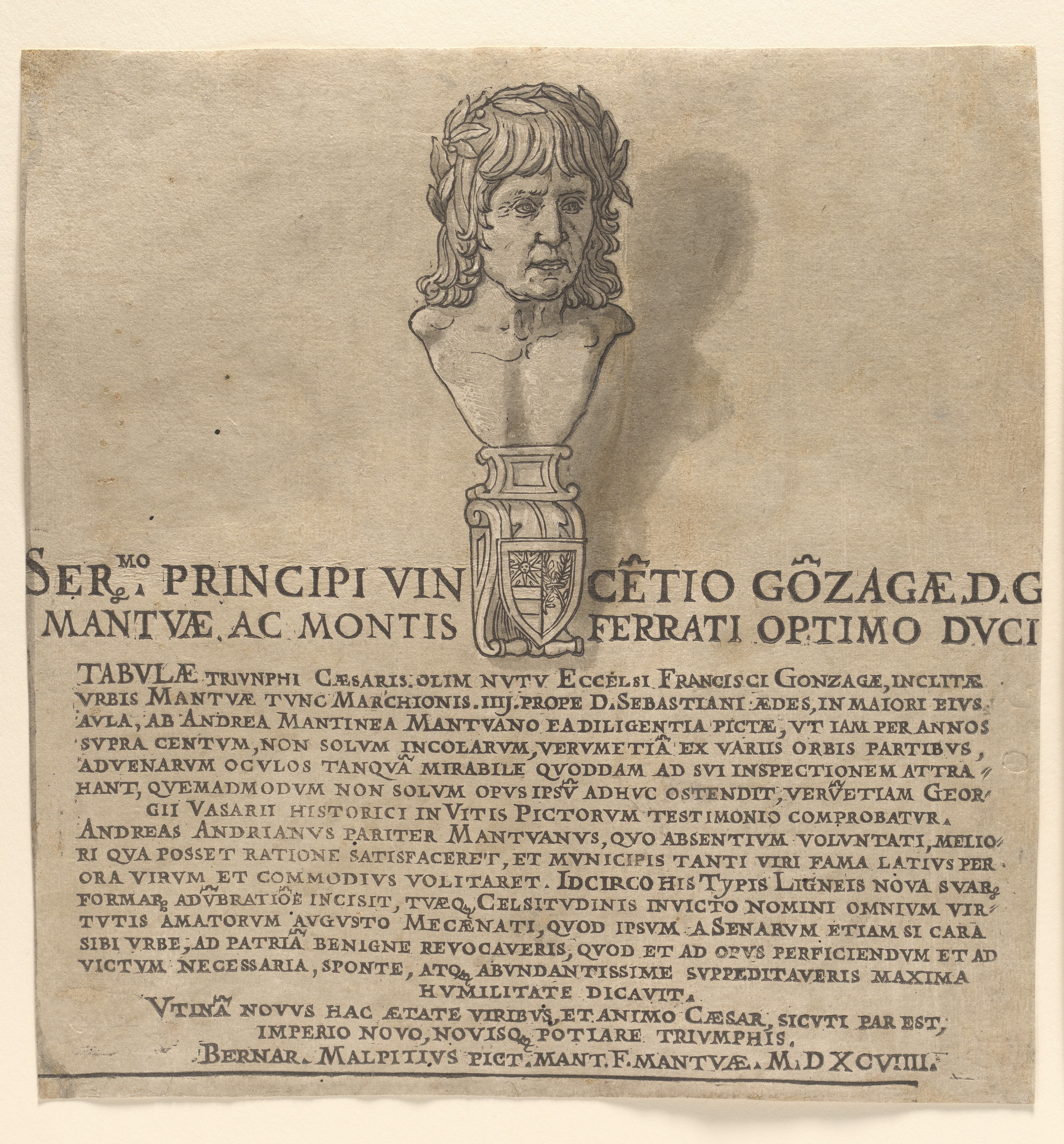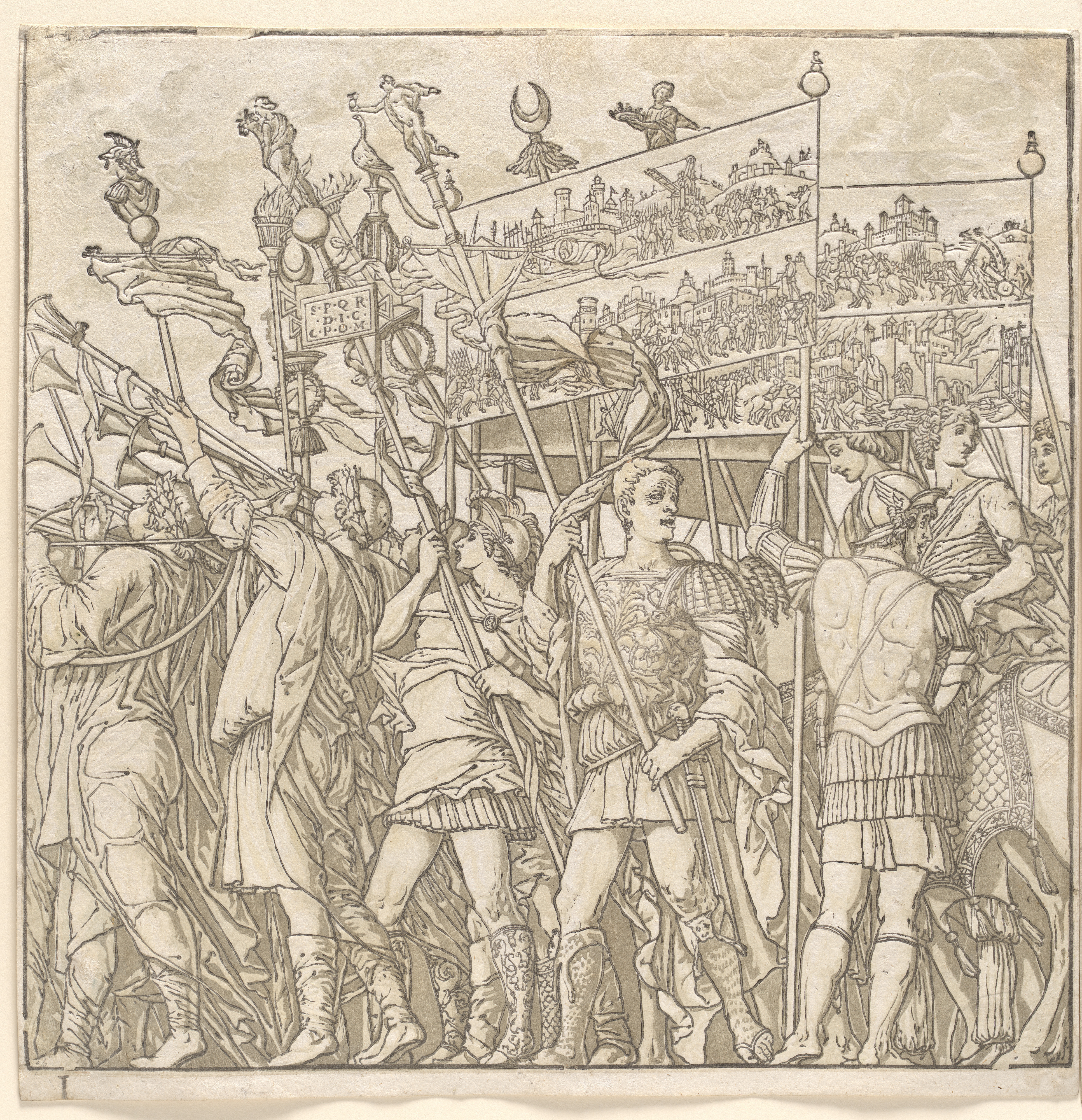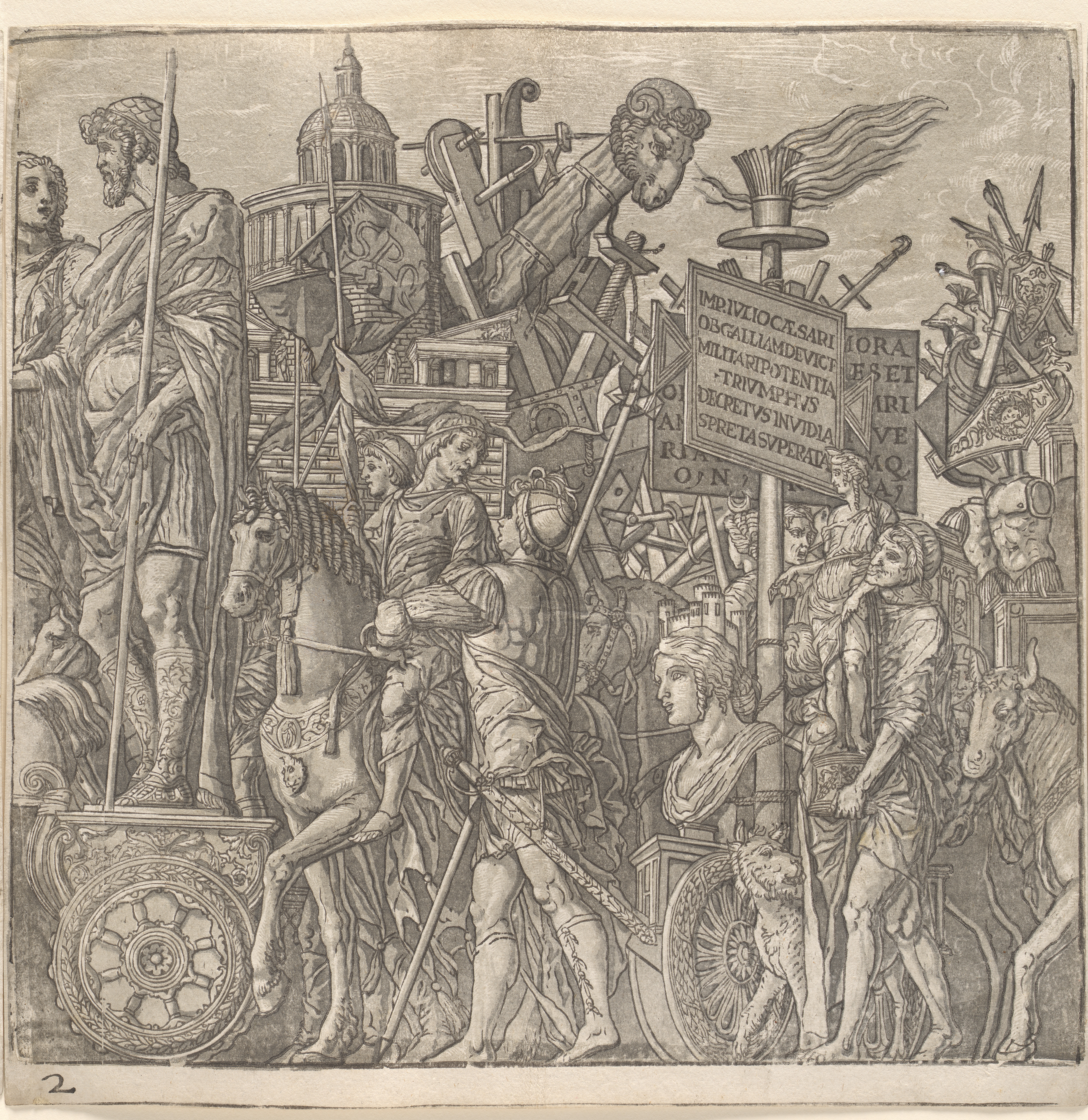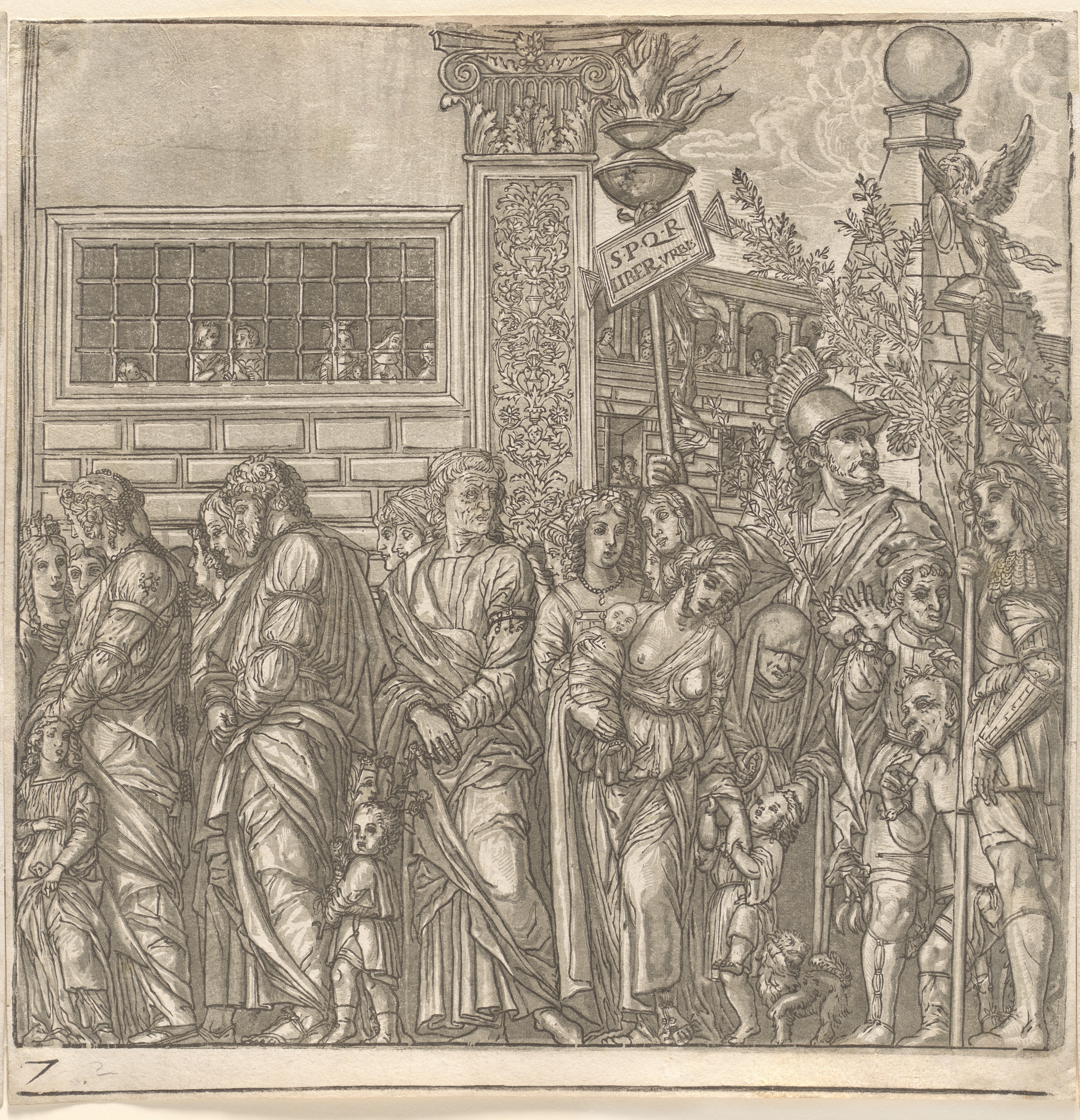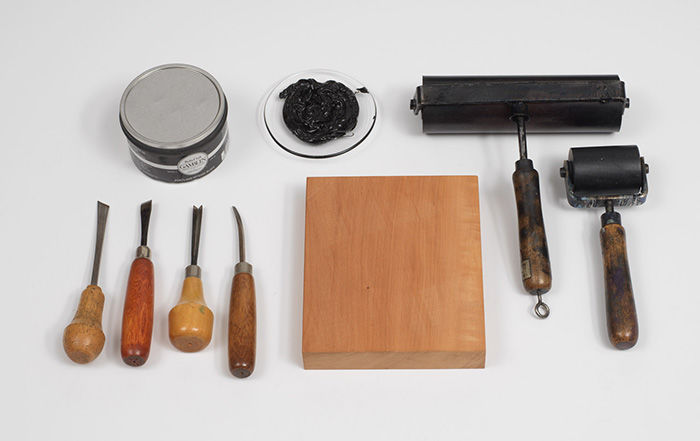The Triumph of Julius Caesar
Andrea Andreani Italian
Intermediary draftsman Bernardo Malpizzi Italian
After Andrea Mantegna Italian
Not on view
The frieze depicts the Triumphs of Julius Caesar after a series of nine paintings created by Andrea Mantegna between 1484 and 1492 for the Gonzaga Ducal Palace in Mantua. The principal subject is a triumphal military parade celebrating the victory of Caesar in the Gallic Wars (58 BC–51 BC). The print is one of the most ambitious made during the sixteenth century. Printing the complex and detailed scene required up to four separate woodblocks. The first to register the black outlines of the many figures and then separately carved blocks to apply the different shades of colour. The result is beautifully syncopated colour design that approximates the effects of a subtle wash drawing. By any standard, this was an expensive undertaking requiring the skill of a number of people. Andreani and his workshop specialized in this sort of ambitious printmaking that found an eager audience amongst those interested in the revival of classical themes.
Due to rights restrictions, this image cannot be enlarged, viewed at full screen, or downloaded.
This artwork is meant to be viewed from right to left. Scroll left to view more.


